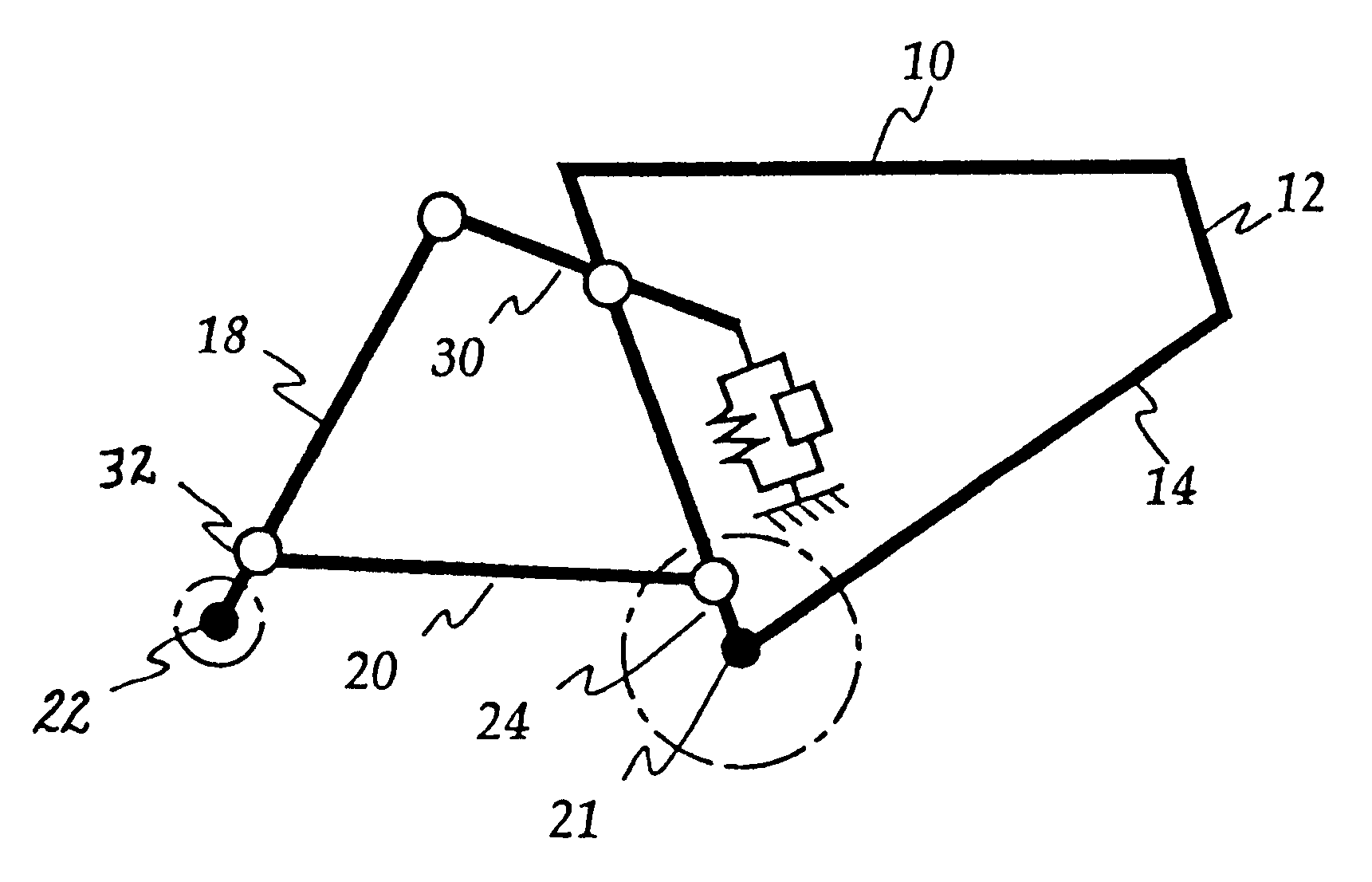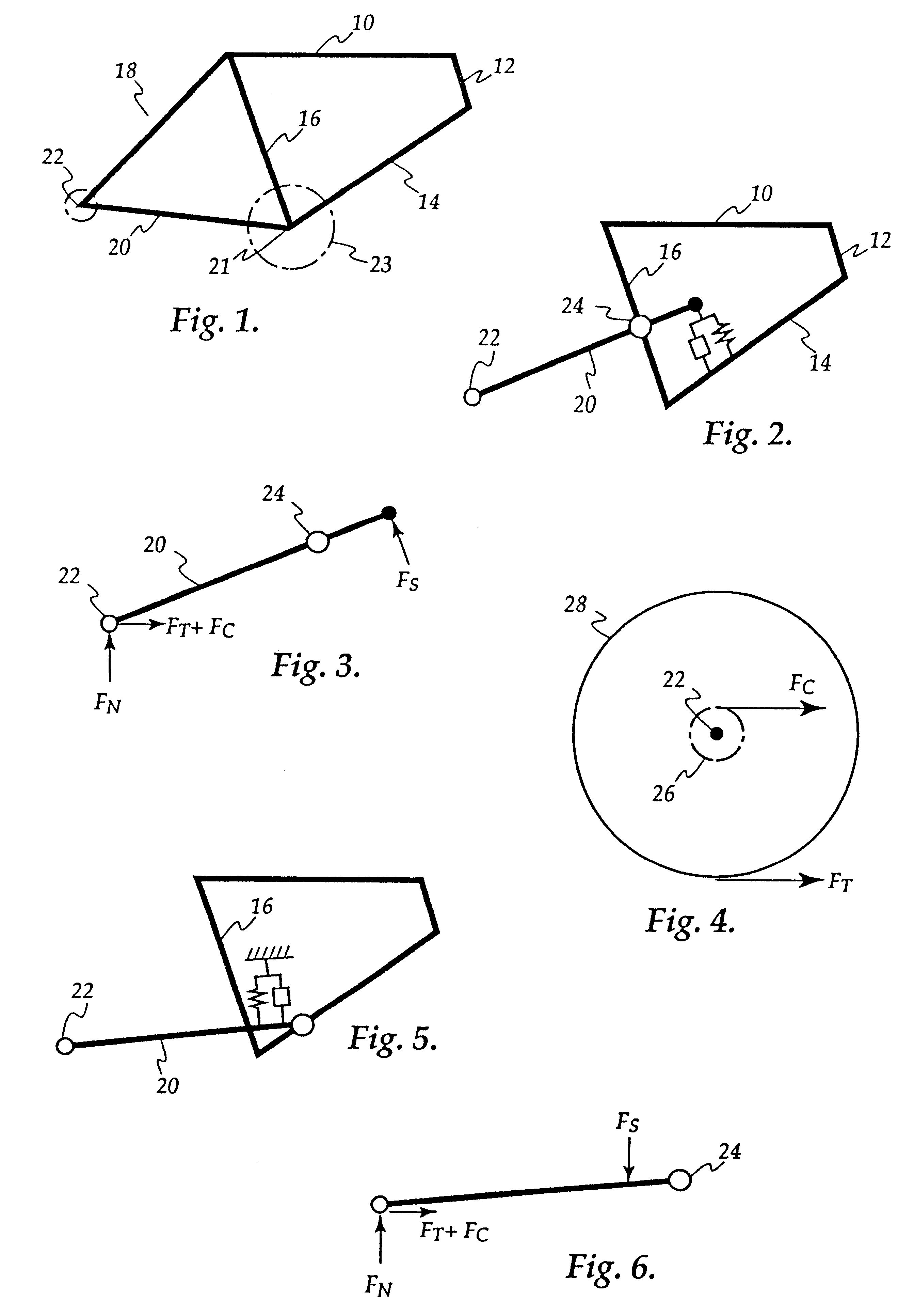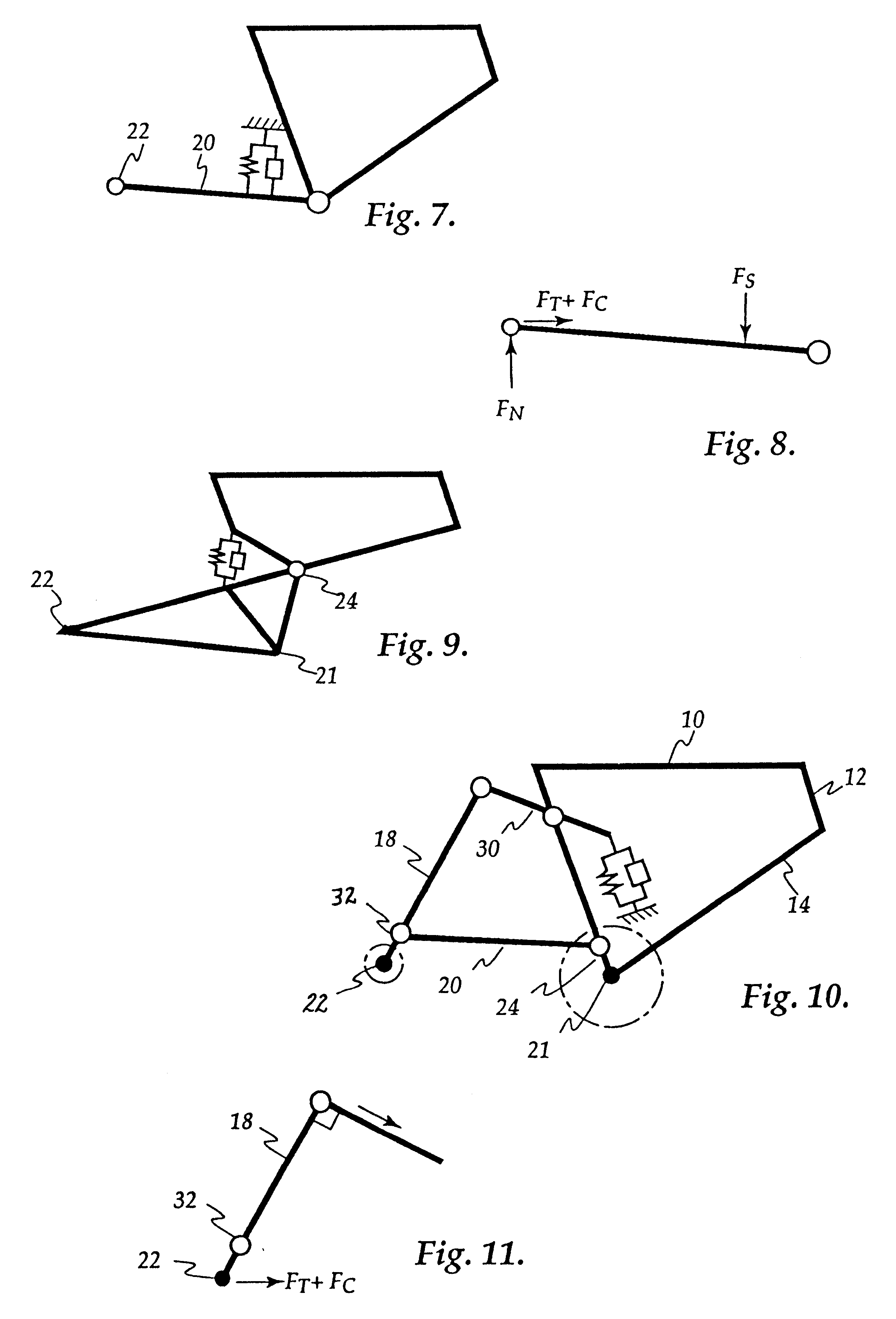Rear suspension system for bicycle
a rear suspension and bicycle technology, applied in the field of rear suspension systems for bicycles, can solve the problems of sprung mass to bob up or down, inability to extend further, and total inactivity
- Summary
- Abstract
- Description
- Claims
- Application Information
AI Technical Summary
Benefits of technology
Problems solved by technology
Method used
Image
Examples
Embodiment Construction
Referring firstly to FIG. 1, there is illustrated a conventional frame for the purpose of establishing nomenclature.
A conventional frame consists of a top tube 10, head tube 12, down tube 14, seat tube 16, seat stays 18 and chain stays 20.
The rearward ends of the chain stays include drop outs for accomodating the rear wheel axle 22.
The intersection of the seat tube 16, down tube 14 and chain stays 20 defines the bottom bracket 21 which accomodates the pedal axle to which the pedals and chainrings 23 are mounted.
THE HIGH PIVOT DESIGN
In FIG. 2 there is shown a high pivot design in which the chain stays 20 are pivotably mounted to the seat tube 16 at a point 24 well above the bottom bracket. As can be seen the seat stays 18 have been eliminated and, in this particular example, the spring / damper is mounted between the down tube and the forward end of the chain stays.
Referring to FIG. 3 there is shown a free body diagram of the chain stay 20 of the high pivot design.
With a rider sitting ...
PUM
 Login to View More
Login to View More Abstract
Description
Claims
Application Information
 Login to View More
Login to View More - R&D
- Intellectual Property
- Life Sciences
- Materials
- Tech Scout
- Unparalleled Data Quality
- Higher Quality Content
- 60% Fewer Hallucinations
Browse by: Latest US Patents, China's latest patents, Technical Efficacy Thesaurus, Application Domain, Technology Topic, Popular Technical Reports.
© 2025 PatSnap. All rights reserved.Legal|Privacy policy|Modern Slavery Act Transparency Statement|Sitemap|About US| Contact US: help@patsnap.com



